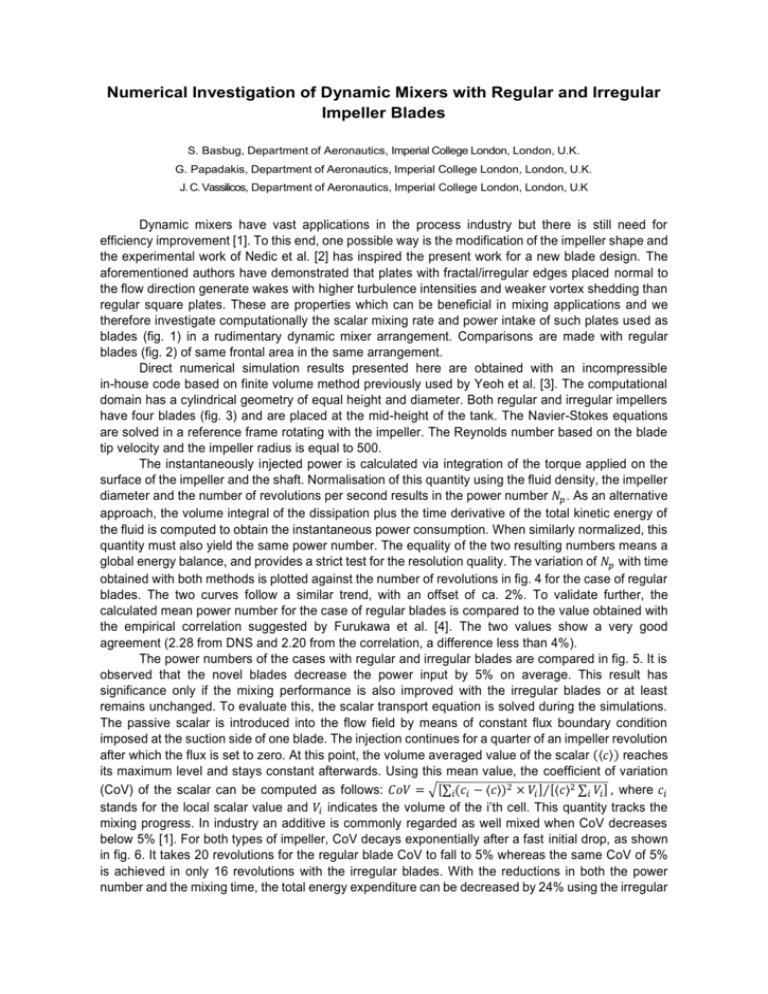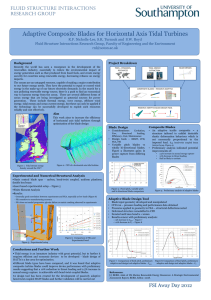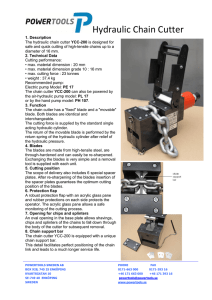Numerical investigation of dynamic mixers with regular and irregular
advertisement

Numerical Investigation of Dynamic Mixers with Regular and Irregular Impeller Blades S. Basbug, Department of Aeronautics, Imperial College London, London, U.K. G. Papadakis, Department of Aeronautics, Imperial College London, London, U.K. J. C. Vassilicos, Department of Aeronautics, Imperial College London, London, U.K Dynamic mixers have vast applications in the process industry but there is still need for efficiency improvement [1]. To this end, one possible way is the modification of the impeller shape and the experimental work of Nedic et al. [2] has inspired the present work for a new blade design. The aforementioned authors have demonstrated that plates with fractal/irregular edges placed normal to the flow direction generate wakes with higher turbulence intensities and weaker vortex shedding than regular square plates. These are properties which can be beneficial in mixing applications and we therefore investigate computationally the scalar mixing rate and power intake of such plates used as blades (fig. 1) in a rudimentary dynamic mixer arrangement. Comparisons are made with regular blades (fig. 2) of same frontal area in the same arrangement. Direct numerical simulation results presented here are obtained with an incompressible in-house code based on finite volume method previously used by Yeoh et al. [3]. The computational domain has a cylindrical geometry of equal height and diameter. Both regular and irregular impellers have four blades (fig. 3) and are placed at the mid-height of the tank. The Navier-Stokes equations are solved in a reference frame rotating with the impeller. The Reynolds number based on the blade tip velocity and the impeller radius is equal to 500. The instantaneously injected power is calculated via integration of the torque applied on the surface of the impeller and the shaft. Normalisation of this quantity using the fluid density, the impeller diameter and the number of revolutions per second results in the power number 𝑁𝑝 . As an alternative approach, the volume integral of the dissipation plus the time derivative of the total kinetic energy of the fluid is computed to obtain the instantaneous power consumption. When similarly normalized, this quantity must also yield the same power number. The equality of the two resulting numbers means a global energy balance, and provides a strict test for the resolution quality. The variation of 𝑁𝑝 with time obtained with both methods is plotted against the number of revolutions in fig. 4 for the case of regular blades. The two curves follow a similar trend, with an offset of ca. 2%. To validate further, the calculated mean power number for the case of regular blades is compared to the value obtained with the empirical correlation suggested by Furukawa et al. [4]. The two values show a very good agreement (2.28 from DNS and 2.20 from the correlation, a difference less than 4%). The power numbers of the cases with regular and irregular blades are compared in fig. 5. It is observed that the novel blades decrease the power input by 5% on average. This result has significance only if the mixing performance is also improved with the irregular blades or at least remains unchanged. To evaluate this, the scalar transport equation is solved during the simulations. The passive scalar is introduced into the flow field by means of constant flux boundary condition imposed at the suction side of one blade. The injection continues for a quarter of an impeller revolution after which the flux is set to zero. At this point, the volume averaged value of the scalar (⟨𝑐⟩) reaches its maximum level and stays constant afterwards. Using this mean value, the coefficient of variation (CoV) of the scalar can be computed as follows: 𝐶𝑜𝑉 = √[∑𝑖(𝑐𝑖 − ⟨𝑐⟩)2 × 𝑉𝑖 ]⁄[⟨𝑐⟩2 ∑𝑖 𝑉𝑖 ] , where 𝑐𝑖 stands for the local scalar value and 𝑉𝑖 indicates the volume of the i’th cell. This quantity tracks the mixing progress. In industry an additive is commonly regarded as well mixed when CoV decreases below 5% [1]. For both types of impeller, CoV decays exponentially after a fast initial drop, as shown in fig. 6. It takes 20 revolutions for the regular blade CoV to fall to 5% whereas the same CoV of 5% is achieved in only 16 revolutions with the irregular blades. With the reductions in both the power number and the mixing time, the total energy expenditure can be decreased by 24% using the irregular blades. These findings suggest that the application of the multiscale irregular blades can lead to enhancement of mixing performance. Future work will cover cases with higher Reynolds numbers and different types of scalar injection. References [1] E. L. Paul, V. A. Atiemo-Obeng and S. M. Kresta. Handbook of Industrial Mixing. John Wiley & Sons, Hoboken, New Jersey, 2004. [2] J. Nedic, B. Ganapathisubramani and J. C. Vassilicos. Drag and near wake characteristics of flat plates normal to the flow with fractal edge geometries. Fluid Dyn. Res., 45:061406, 2013. [3] S. L. Yeoh, G. Papadakis and M. Yianneskis. Determination of mixing time and degree of homogeneity in stirred vessels with large eddy simulation. Chem. Eng. Sci., 60:2293–2302, 2005. [4] H. Furukawa, Y. Kato, Y. Inoue, T. Kato, Y. Tada and S. Hashimoto. Correlation of power consumption for several kinds of mixing impellers. Int. J. Chem. Eng., 2012:6, 2012. Figure 1. Irregular blade. Figure 2. Regular blade. Figure 4. Variation of the power number obtained with regular blades vs. impeller revolutions. Figure 3. Tank cross section. Figure 5. Power numbers of regular and irregular cc blades vs. impeller revolutions. Figure 6. CoV vs. impeller revolutions.





